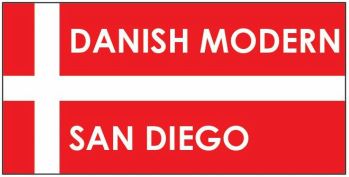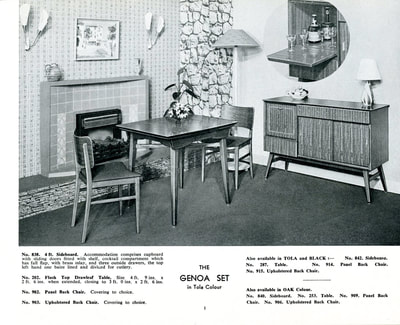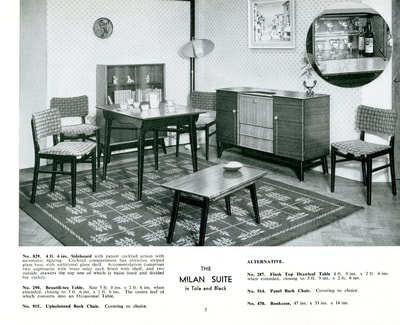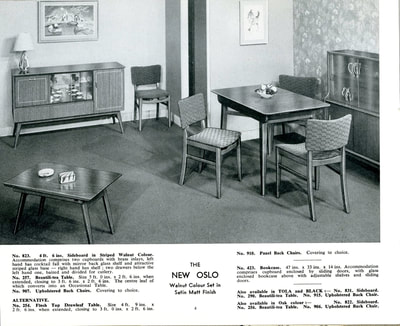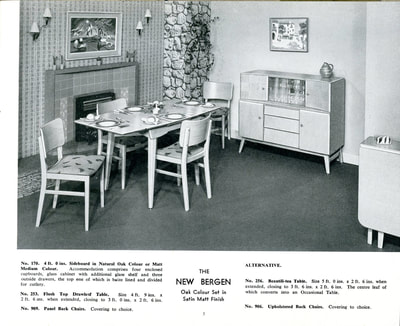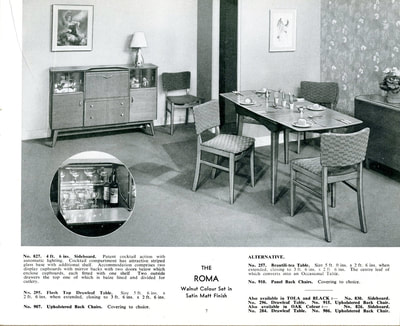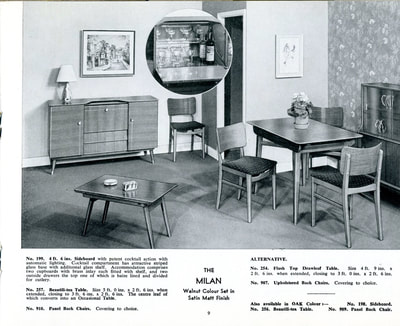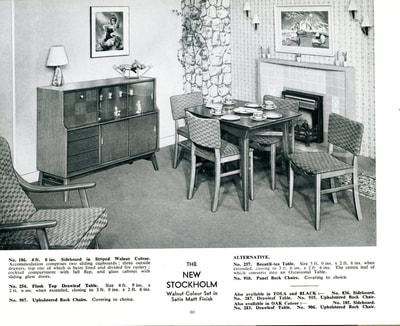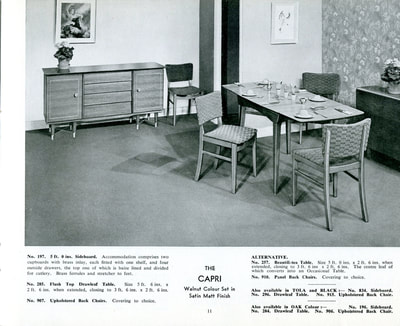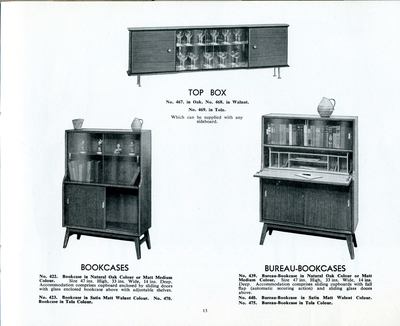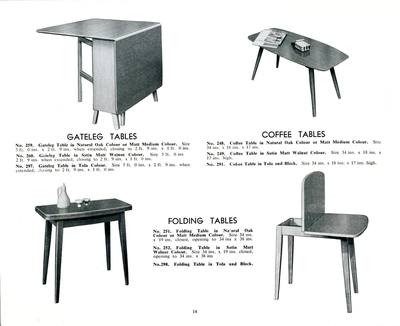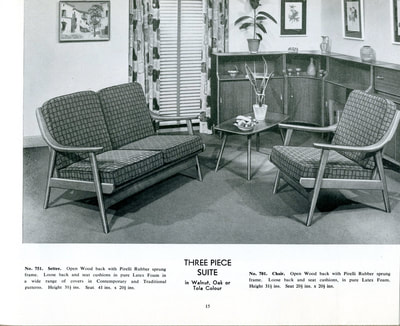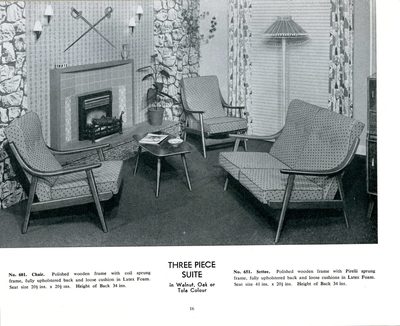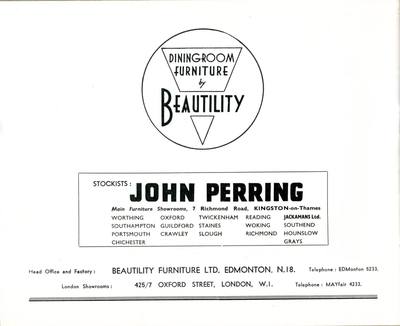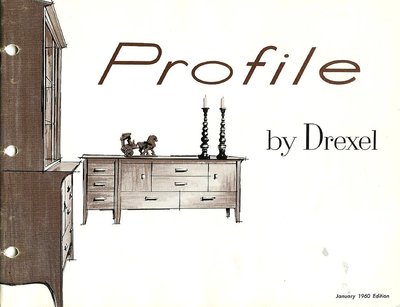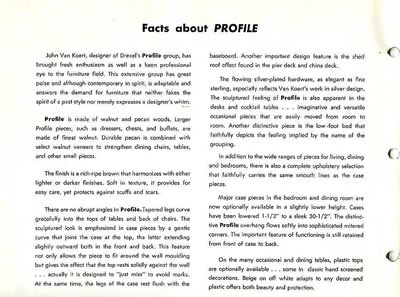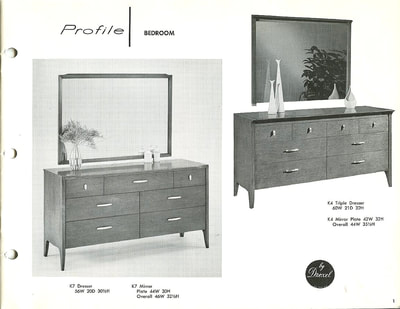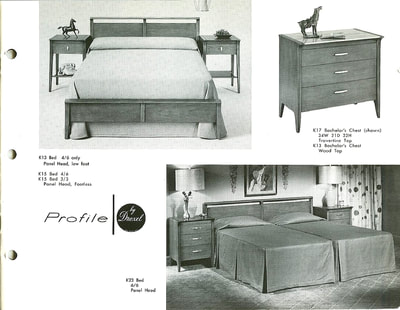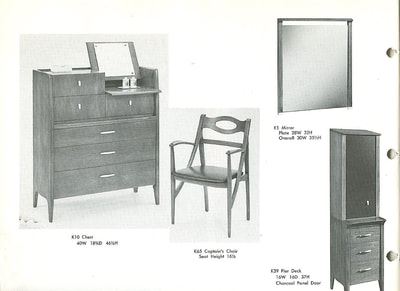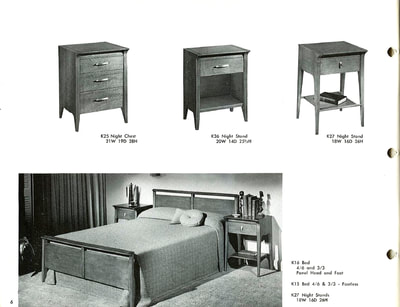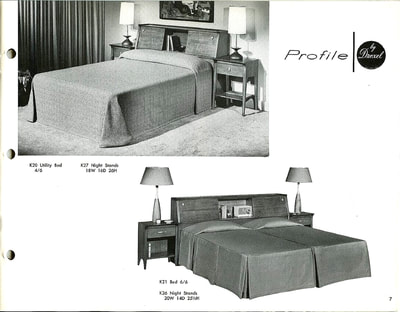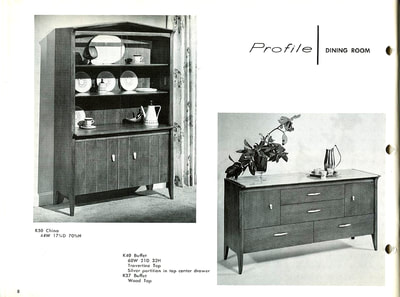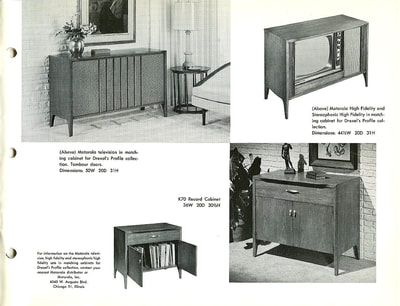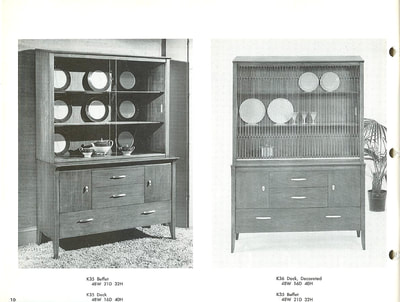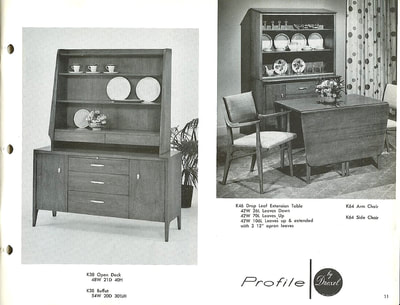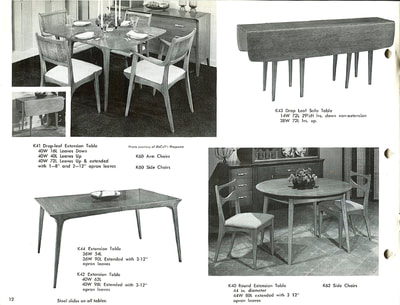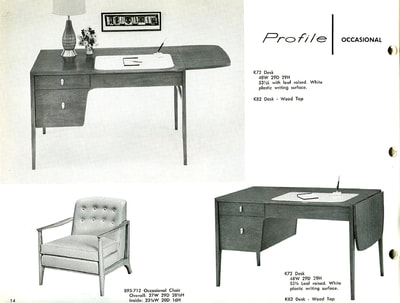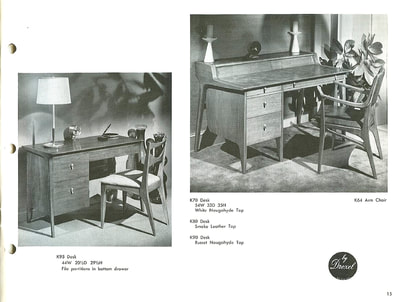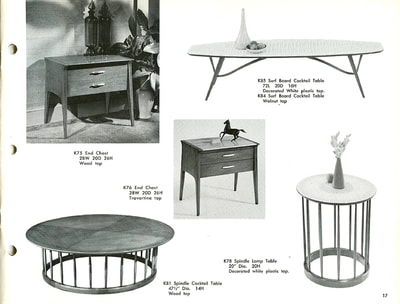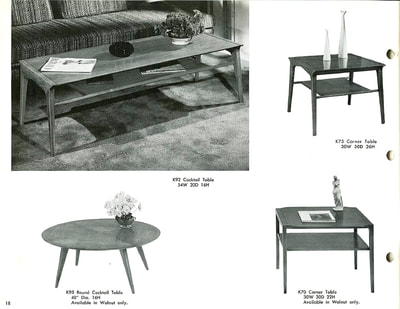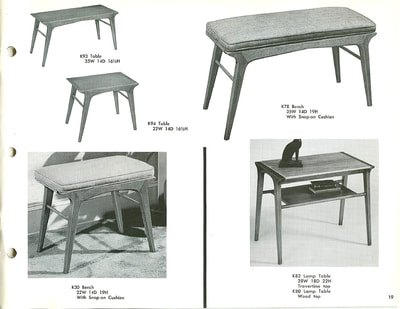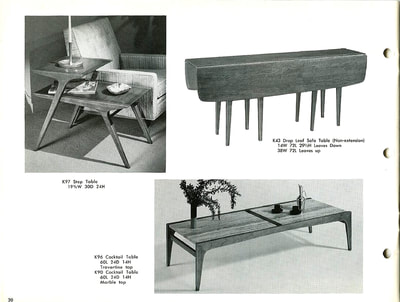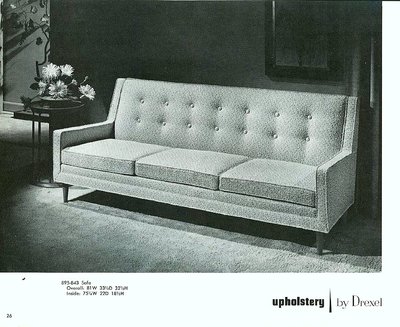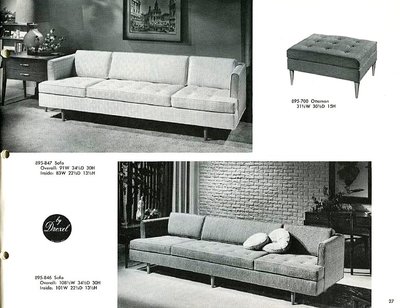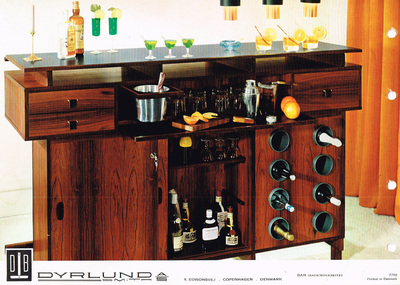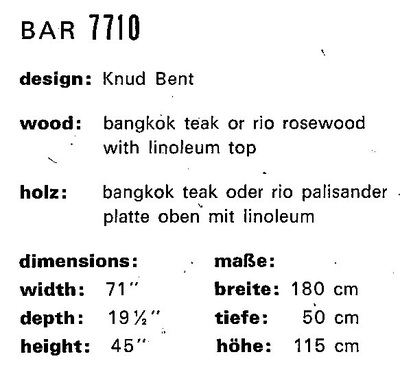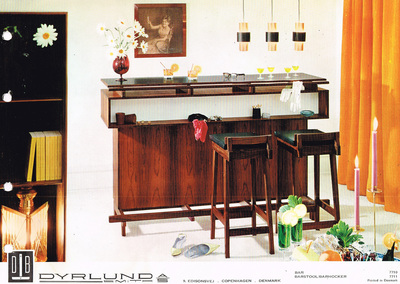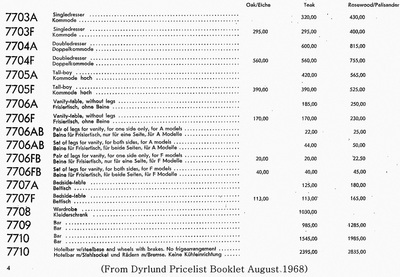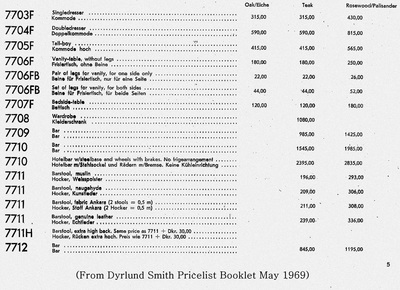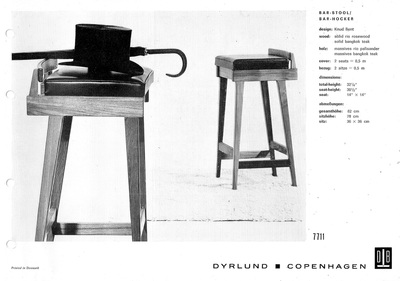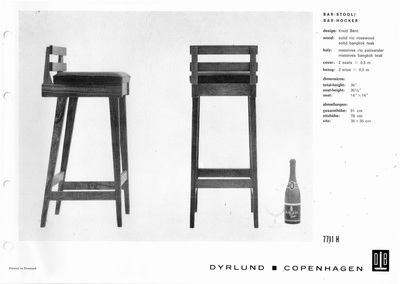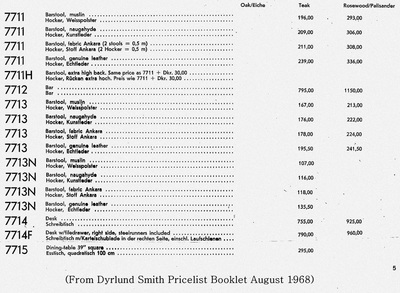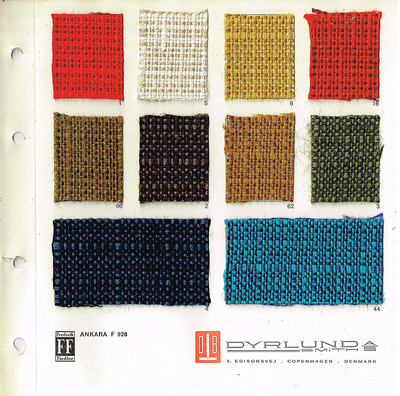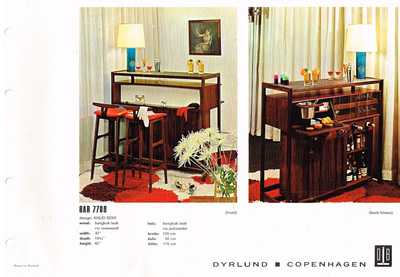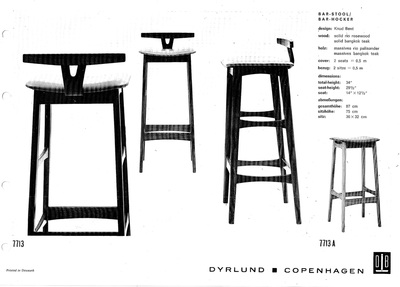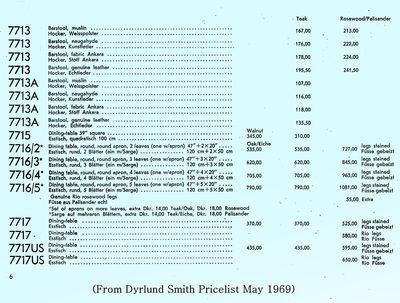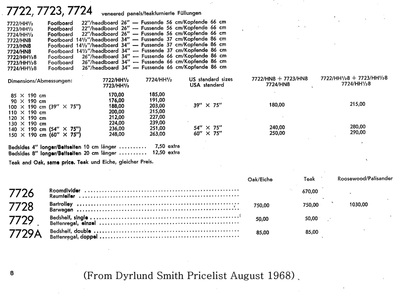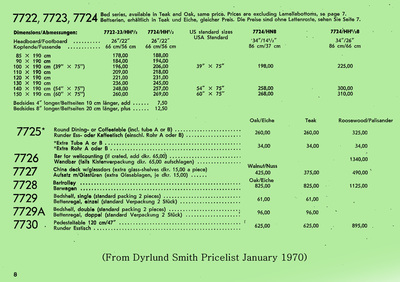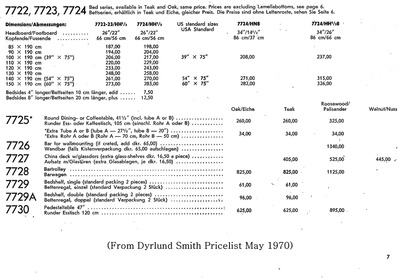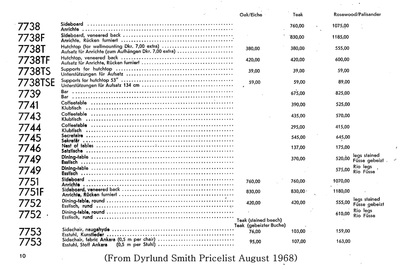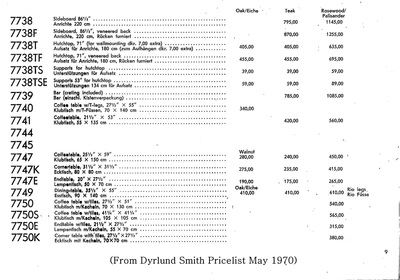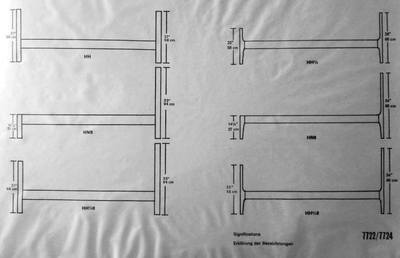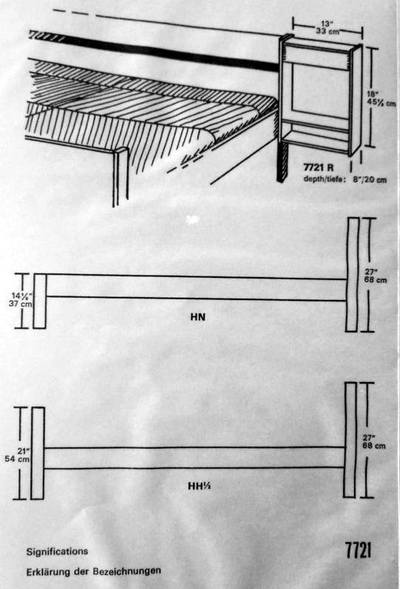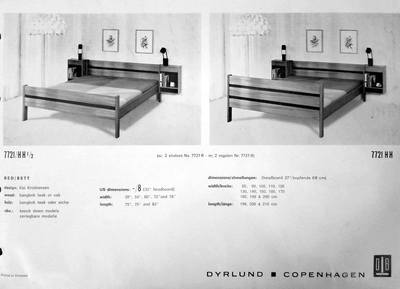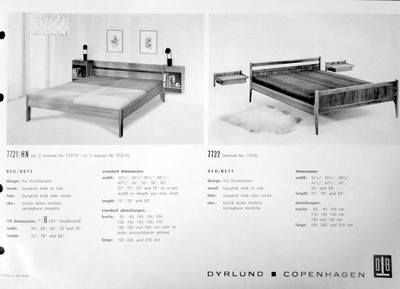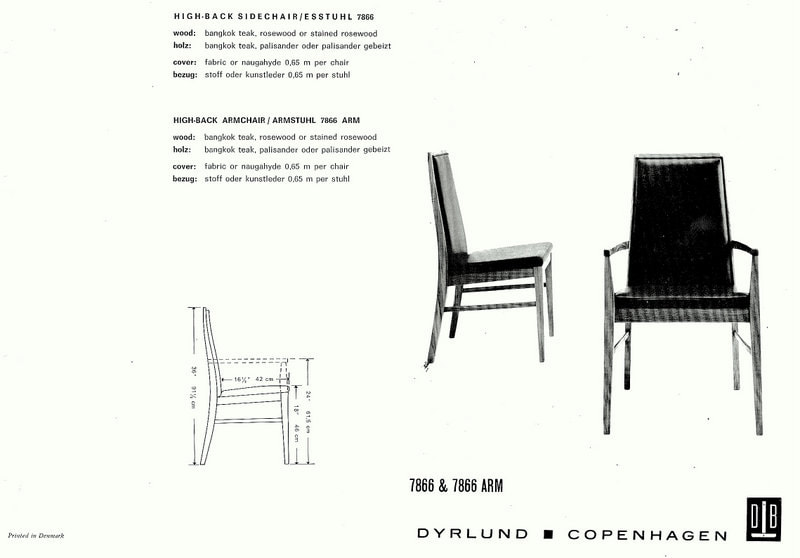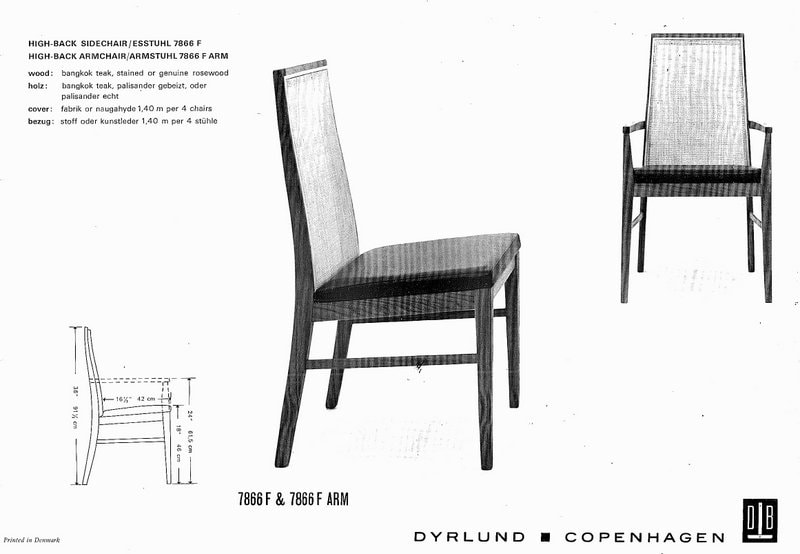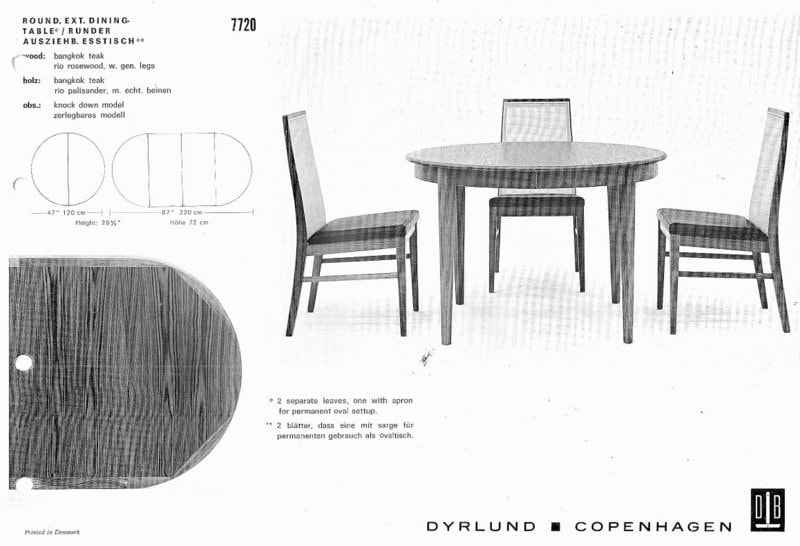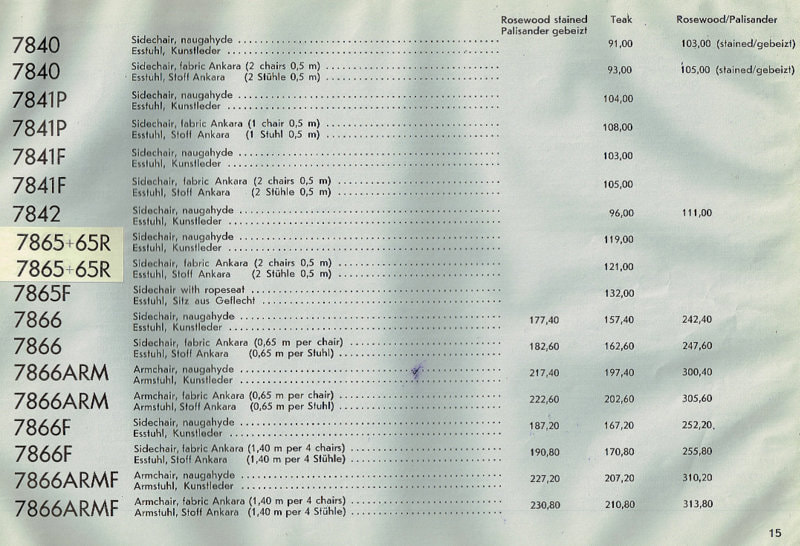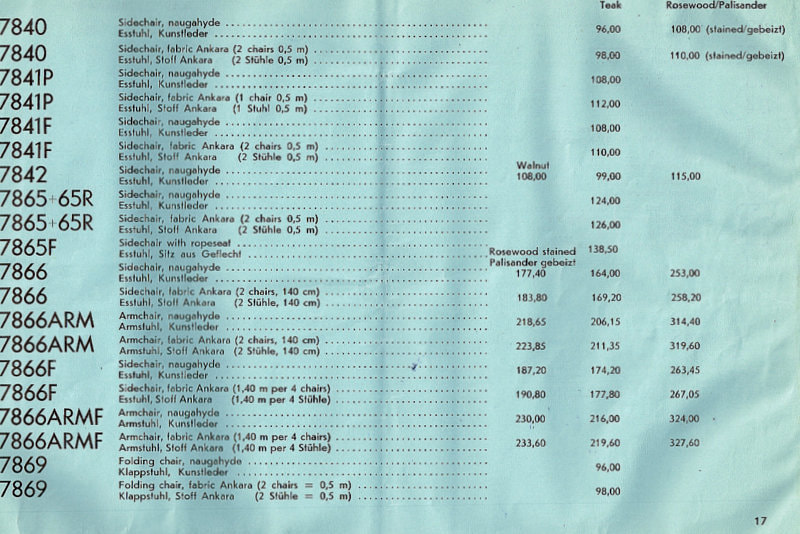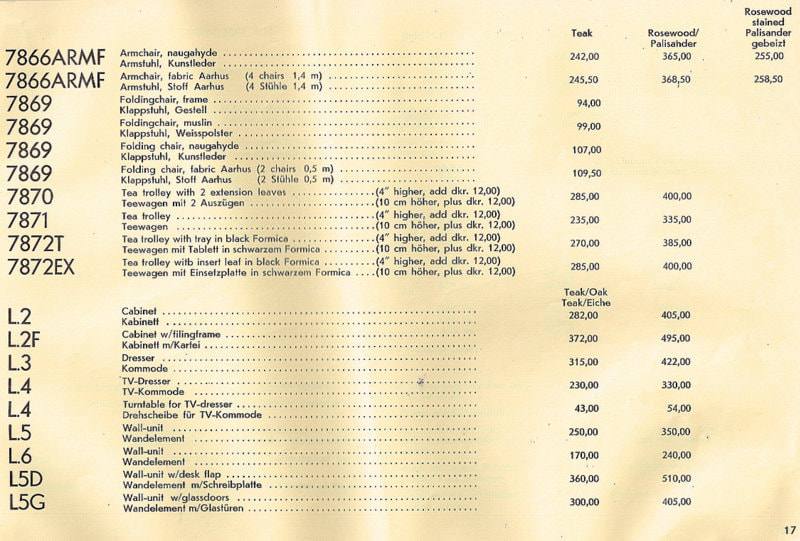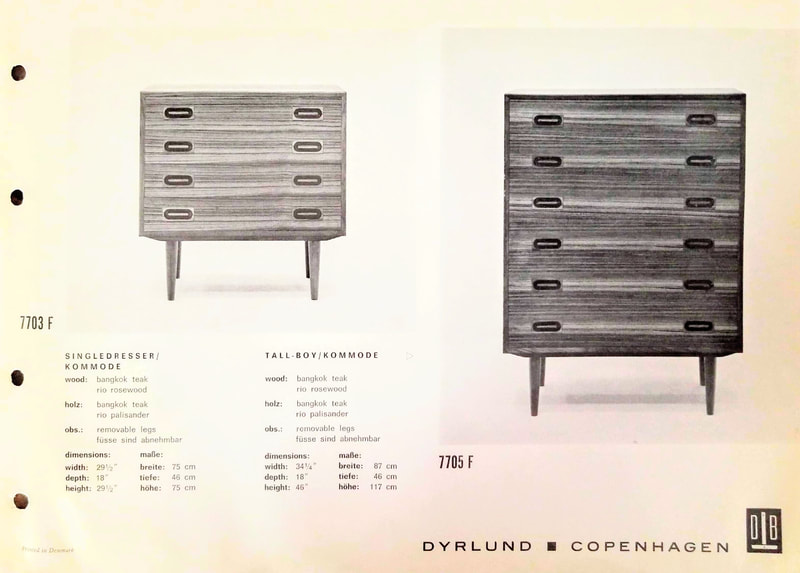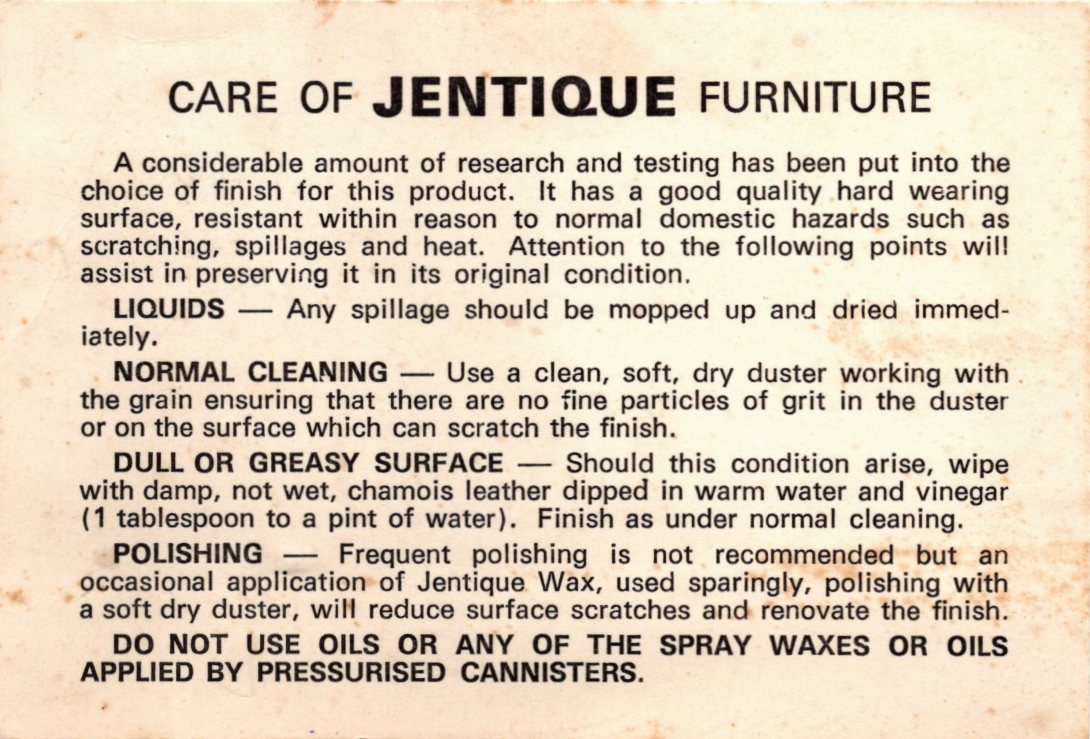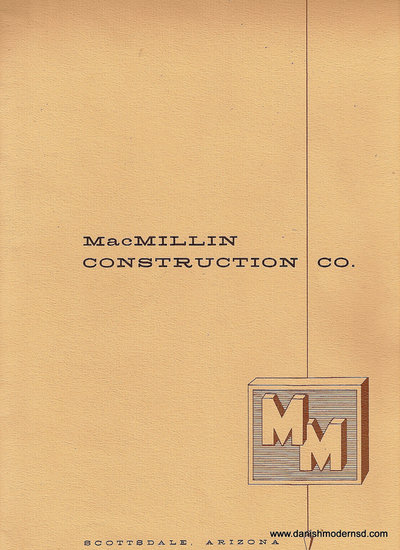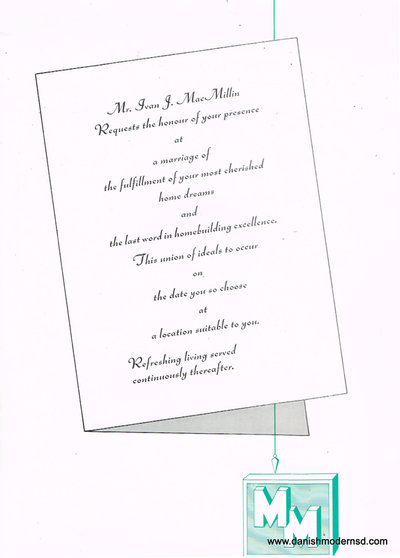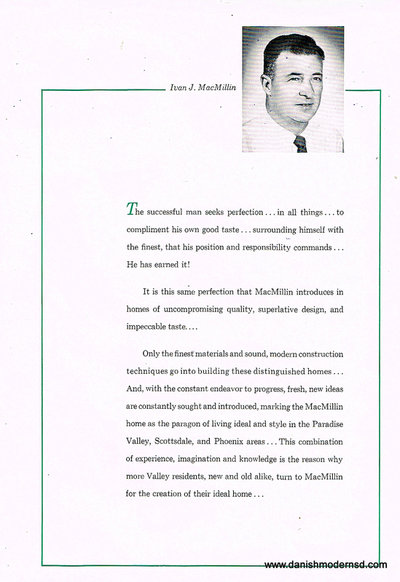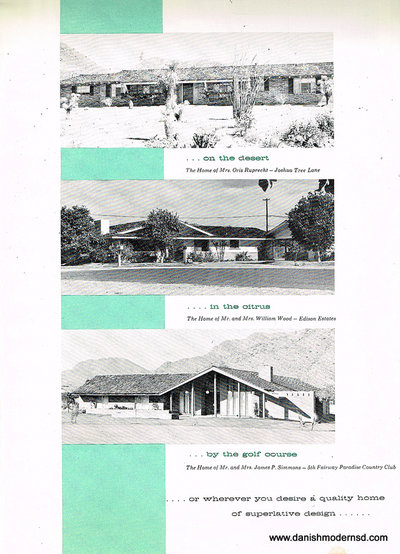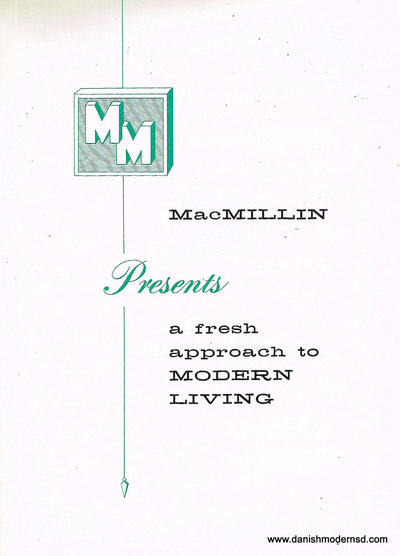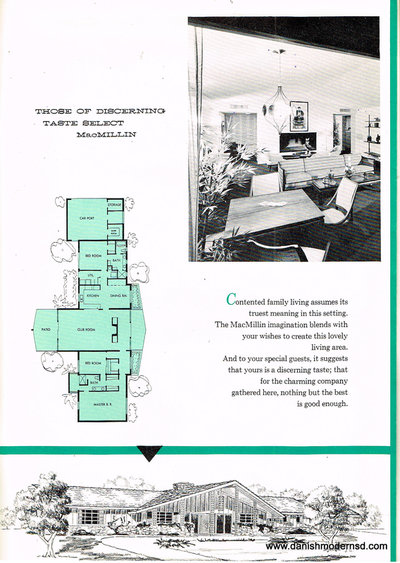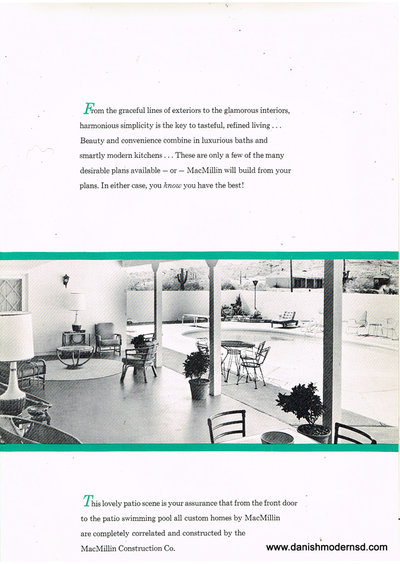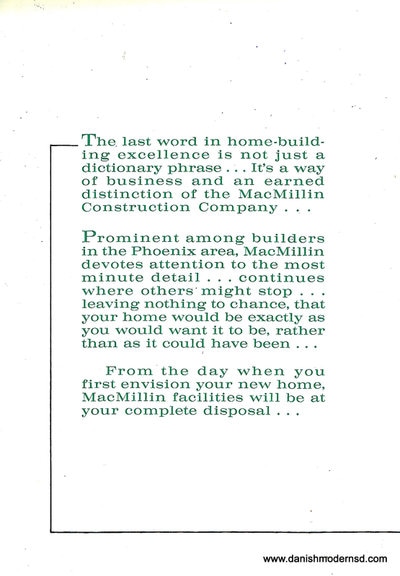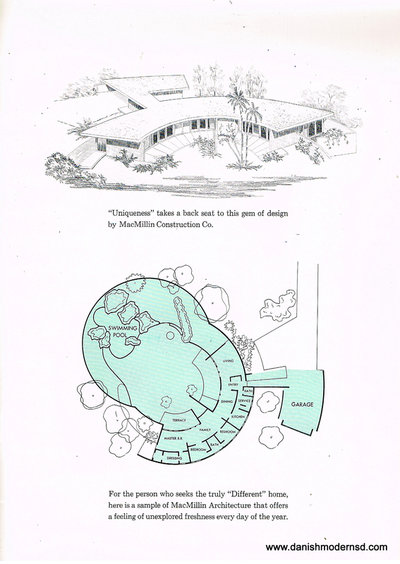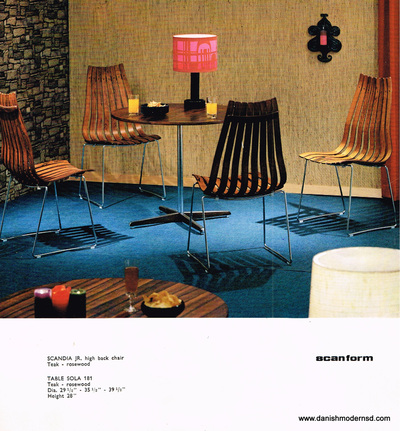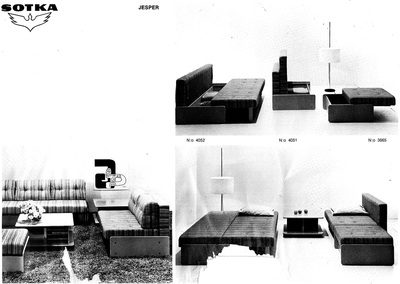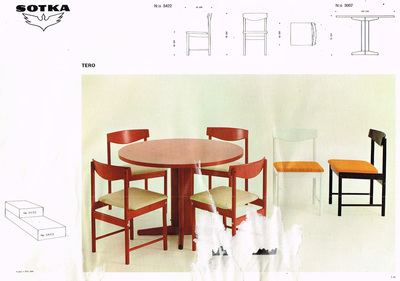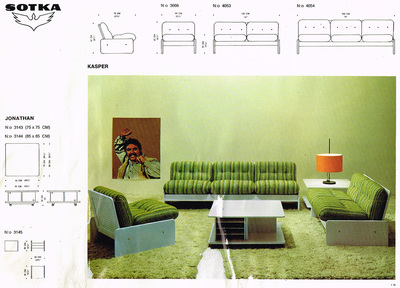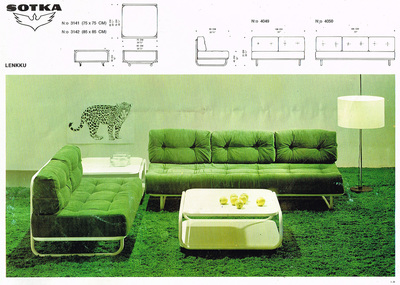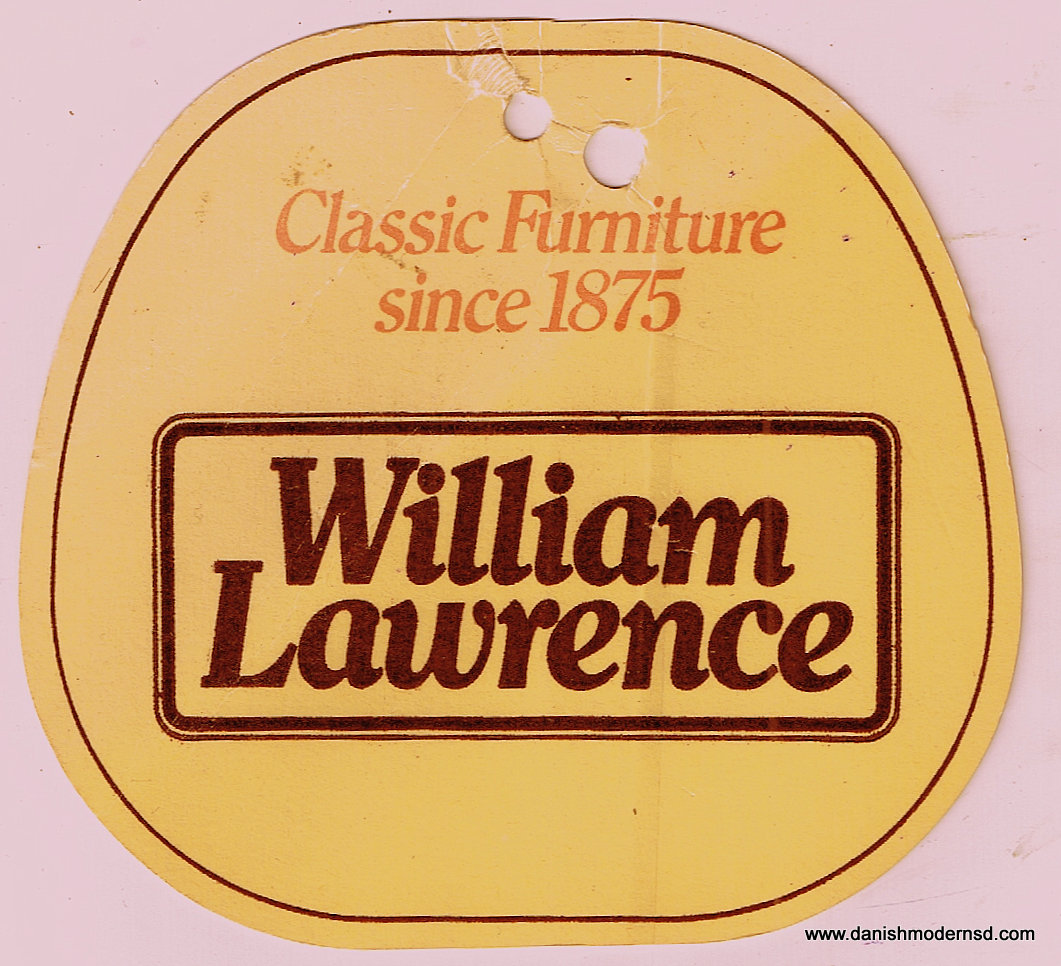Welcome to the Danish Modern San Diego Research Archive
The Danish Modern San Diego collection of original catalogs, brochures, promotional materials and links showcasing Mid-Century Modern furniture designs and more. Posts are presented alphabetically by company, brand, or designer. Check back for updates and feel free to share!
Items featured are from our collections or are submitted for use by our clients and followers. If you have items to contribute contact us at danishmodernsandiego@gmail.com
For information regarding G-Plan, Ercol, Skull's, and more, visit the extensive High Wycombe Furniture Archive here: hwfurniturearchive.bucks.ac.uk/asset-bank/action/viewHome
Items featured are from our collections or are submitted for use by our clients and followers. If you have items to contribute contact us at danishmodernsandiego@gmail.com
For information regarding G-Plan, Ercol, Skull's, and more, visit the extensive High Wycombe Furniture Archive here: hwfurniturearchive.bucks.ac.uk/asset-bank/action/viewHome
BEAUTILITY FURNITURE, LTD. 1957 Catalogue
Beautility began in 1896 when 24 year old Simon Sadovsky opened a cabinet makers shoppe in the Shorditch area of London. The 1908 phone book lists Sadovsky Brothers at 55 Austin Street E. They crafted fine reproduction furniture in mahogany and walnut, wrapped the pieces in canvas and packed them in wood crates, then sent them to Scotland. The firms in Scotland exported the furniture to the United States. By 1927 the firm owned a factory in Scawfell Street E. and an office and showroom opposite in Hackney Road E. By 1929 the Scawfell factory was moved to a new factory in Ezra Street. The brothers wanted to make more modern furniture so they proceeded to manufacture fine bedroom and dining room suites along with reproduction pieces like wine tables, nest tables, lamp standards, etc. Ronald Sadovsky went on to train in producing working drawings for his furniture designs manufactured what became Beautility Furniture Ltd (named by youngest brother Harvey, or "Chi", from the terms "beautiful and useful"). Chi handled marketing for the company. Brother Gerald emigrated to the U.S.A. to work at Freshman's Radio who manufactured radios with the latest mass production methods for the period. In 1931 new offices and factory were occupied at Angel Road, Edmonton. Beautility Furniture Ltd. became a publicly traded company in 1935 and was producing 1,000 dining suites (sideboard, table, 4 chairs) each week until 1939, when war broke out. During the war years the Ministry of Supply requested the Beautility factory make ammunition boxes and other items for the war effort. When the war ended the Board of Trade requested they only make utility furniture, along with the other furniture manufacturers, as needed for reconstruction. Design restrictions were lifted in 1949/1950. Come 1957, Beautility took over furniture manufacturing firm "Supersuites". Later that year the two older brothers retired (the youngest one had passed away at age 39). On retiring, they sold their controlling interest in Beautility to the firm Bowaters. From Bowaters, Beautility was sold to Frank Austin of Austinsuites, then to Stonehill Furniture, Ltd., then to The Morris Group of Glasgow, Scotland in 1999 and re-branded as Zone Furniture.
Drexel Profile Catalog, January 1960 Edition
From the catalog:
"John Van Koert, designer of Drexel's Profile group, has brought fresh enthusiasm as well as a keen professional eye to the furniture field. This extensive group has great poise and, although contemporary In spirit, is adaptable and answers the demand for furniture that neither fakes the spirit of a past style nor merely expresses a designer's whim.
Profile is made of walnut and pecan woods. Larger Profile pieces such as dressers, chests, and buffets, are made of finest walnut. Durable pecan is combined with select walnut veneers to strengthen dining chairs, tables and other small pieces.
The finish is a rich-ripe brown that harmonizes with either lighter or darker finishes. Soft in texture, it provides for easy care, yet protects against scuffs and scars.
There are no abrupt angles in Profile. Tapered legs curve gracefully into the tops of tables and back of chairs. The sculptured look is emphasized in case pieces by a gentle curve that joins the case at the top, the latter extending slightly outward both in the front and back. This feature not only allows the piece to fit around the wall moulding but gives the effect that the top rests solidly against the wall . . . actually it is designed to "just miss" to avoid marks. At the same time, the legs of the case rest flush with the baseboard. Another important design feature is the shed roof effect found in the pier deck and china deck.
The flowing silver-plated hardware, as elegant as fine sterling, especially reflects Van Koert's work in silver design. The sculptured feeling of Profile is also apparent in the desks and cocktail tables . . . imaginative and versatile occasional pieces that are easily moved from room to room. Another distinctive piece is the low-foot bed that faithfully depicts the feeling implied by the name of the grouping.
In addition to the wide range of pieces for living, dining and bedrooms, there is also a complete upholstery selection that faithfully carries the same smooth lines as the case pieces.
Major case pieces in the bedroom and dining room are now optionally available in a slightly lower height. Cases have been lowered 1-1/2" to a sleek 30-1/2". The distinctive Profile overhang flows softly into sophisticated mitered corners. The important feature of functioning is still retained from front of case to back.
On the many occasional and dining tables, plastic tops are optionally available . . . some in classic hand screened decorations. Beige on off white adapts to any décor and plastic offers both beauty and protection."
"John Van Koert, designer of Drexel's Profile group, has brought fresh enthusiasm as well as a keen professional eye to the furniture field. This extensive group has great poise and, although contemporary In spirit, is adaptable and answers the demand for furniture that neither fakes the spirit of a past style nor merely expresses a designer's whim.
Profile is made of walnut and pecan woods. Larger Profile pieces such as dressers, chests, and buffets, are made of finest walnut. Durable pecan is combined with select walnut veneers to strengthen dining chairs, tables and other small pieces.
The finish is a rich-ripe brown that harmonizes with either lighter or darker finishes. Soft in texture, it provides for easy care, yet protects against scuffs and scars.
There are no abrupt angles in Profile. Tapered legs curve gracefully into the tops of tables and back of chairs. The sculptured look is emphasized in case pieces by a gentle curve that joins the case at the top, the latter extending slightly outward both in the front and back. This feature not only allows the piece to fit around the wall moulding but gives the effect that the top rests solidly against the wall . . . actually it is designed to "just miss" to avoid marks. At the same time, the legs of the case rest flush with the baseboard. Another important design feature is the shed roof effect found in the pier deck and china deck.
The flowing silver-plated hardware, as elegant as fine sterling, especially reflects Van Koert's work in silver design. The sculptured feeling of Profile is also apparent in the desks and cocktail tables . . . imaginative and versatile occasional pieces that are easily moved from room to room. Another distinctive piece is the low-foot bed that faithfully depicts the feeling implied by the name of the grouping.
In addition to the wide range of pieces for living, dining and bedrooms, there is also a complete upholstery selection that faithfully carries the same smooth lines as the case pieces.
Major case pieces in the bedroom and dining room are now optionally available in a slightly lower height. Cases have been lowered 1-1/2" to a sleek 30-1/2". The distinctive Profile overhang flows softly into sophisticated mitered corners. The important feature of functioning is still retained from front of case to back.
On the many occasional and dining tables, plastic tops are optionally available . . . some in classic hand screened decorations. Beige on off white adapts to any décor and plastic offers both beauty and protection."
Dyrlund Cocktail Bars and Stools with Price Lists, 1968-1970
Dyrlund Beds, 1968-1970
Dyrlund Dining Chairs with Price Lists, 1968-1970
Dyrlund Dressers | Kommodes | Tall-Boys, 1968-1970
G-Plan 1965-1975 Furniture Tag with Care Instructions
"The beautiful teak veneers of G-Plan cabinet furniture are protected by a tough polyurethane finish giving them a high resistance to stains, scratches, and reasonable heat. Wear and tear varies greatly from one home to another but a regular wipe with a soft cloth dampened by rinsing in clean, warm water is all that is required in normal use. Similar treatment will also keep interior surfaces clean and fresh.
Occasional treatment with a branded aerosol furniture polish, such as Johnson's Pledge or Sparkle, will be beneficial. Take care NOT to use too much and NEVER to spray any on upholstered areas.
Repairing damage is a job best done by experts; on these occasions, and if you have any other difficulties, please get in touch with your local G-Plan stockist.
E. Gomme Ltd, Spring Gardens, High Wycombe, Bucks."
Occasional treatment with a branded aerosol furniture polish, such as Johnson's Pledge or Sparkle, will be beneficial. Take care NOT to use too much and NEVER to spray any on upholstered areas.
Repairing damage is a job best done by experts; on these occasions, and if you have any other difficulties, please get in touch with your local G-Plan stockist.
E. Gomme Ltd, Spring Gardens, High Wycombe, Bucks."
G-Plan Danish Design Catalogue, 1962
The 1950s was a very successful decade for the Ebenezer Gomme Furniture Company; however, a few factors gave Gomme a rough time at the beginning of the 1960s. The inspiration behind Gomme's G-Plan brand, Donald Gomme, left the company in 1958; the English government imposed the "credit-squeeze" and controlled domestic demand by asking buyers to put down a higher deposit or restricting the length off their hire purchase agreement; and the company built up stock for a massive sales campaign on which thousands of pounds was spent on advertising. These factors, combined with an uninspired G-Plan range for 1960, resulted in dropped demand for domestic furnishings and a growing interest in Scandinavian imports.
In response to the new demand for Scandinavian designs, Gomme hired Danish designer Ib Kofod-Larsen, who designed a complete new range for the company, G-Plan Danish.
The G-Plan Danish designs by Ib Kofod-Larsen debuted in January 1962.
Ib Kofod-Larsen created many furniture technical drawings for E. Gomme between 1961 and 1974. Many incorporate rough amendment sketches and written notes. Very few designs were ever put into production.
(Historical information from the book "The G-Plan Revolution: A Celebration of British Popular Furniture of the 1950s and 1960s" by Basil Hyman and Steven Bragg and from the High Wycombe Furniture Archive. Scanned catalogue below is from the furniture archives of Danish Modern San Diego.)
In response to the new demand for Scandinavian designs, Gomme hired Danish designer Ib Kofod-Larsen, who designed a complete new range for the company, G-Plan Danish.
The G-Plan Danish designs by Ib Kofod-Larsen debuted in January 1962.
Ib Kofod-Larsen created many furniture technical drawings for E. Gomme between 1961 and 1974. Many incorporate rough amendment sketches and written notes. Very few designs were ever put into production.
(Historical information from the book "The G-Plan Revolution: A Celebration of British Popular Furniture of the 1950s and 1960s" by Basil Hyman and Steven Bragg and from the High Wycombe Furniture Archive. Scanned catalogue below is from the furniture archives of Danish Modern San Diego.)
Happy Viking Furniture Catalog, 1978
Thanks to dyrlund collector Billy Britt for scanning his catalog and giving us permission to share it with you here! Happy Viking sold furniture from dyrlund, Trioh, and more.
Jentique
Jentique Limited, Dereham, Norfolk, was a furniture brand made by Jentique Furniture, Ltd., started in the 1930s by toymaker Geoffrey Bowman Jenkins and his wife Edith. Jenkins lost the business in 1936 to partner Bernard Smart, maker of Metamec Clocks. Jentique was known for their modern design styles produced in the 1950s and 1960s in teak, tola, and American walnut woods. During the 1960s and 1970s Jentique produced a line of furniture in figured ash to compete with Ercol's beech and elm furniture. The Jentique ash furniture is of high quality construction, with an excellent finish and a good colour. Unlike Ercol furniture of the period, the Jentique pieces seem to be quite uncommon, and were probably made and sold in small quantities in the UK, although it is possible that export markets existed at the time. In the UK there exists a small but devoted band of Jentique ash furniture collectors and enthusiasts. The Jentique logo / seal is a termoimpresso brand with helmet as shown on the original tag below.

Jentique Contemporary Furniture tag. "To preserve the satin finish on this article it is unadvisable to use furniture creams, liquids, or wax polishes of any kind. An occasional rub with a cloth lightly damped with a mixture of 1 part vinegar to 9 parts water, followed by a brisk wipe over with a soft cloth will keep the finish as new."
Jentique Furniture catalogue 1964
"This leaflet illustrates the designs at present available. Examine the pieces in the shop and we are sure you will be impressed by the finish and the first class materials used. As a medium sized company Jentiques production is restricted enough to ensure that your purchase is exclusive and we guarantee every item against defects as it is a matter of pride to us that each individual customer shall be permanently satisfied with his acquisition."
Kipp Stewart for Directional's Gallery V Collection 1970
Earl Johnson (of Johnson Furniture Co., Grand Rapids, Michigan) retired in 1963 and the family sold the business to a group of investors led by James Van Oosten. Milo Baughman and Kipp Stewart designed lines of residential furniture, which Johnson produced for Directional Industries between 1963 and 1968. Holiday Inns, Inc. owned the company between 1968 and 1975, when the company returned to the ownership of Van Oosten and company. In 2001 Tomlinson-Erwin-Lambeth bought Directional.
Read about Kipp Stewart's art and design experiences here: http://eklektx.com/kipp-stewart/
Read about Kipp Stewart's art and design experiences here: http://eklektx.com/kipp-stewart/
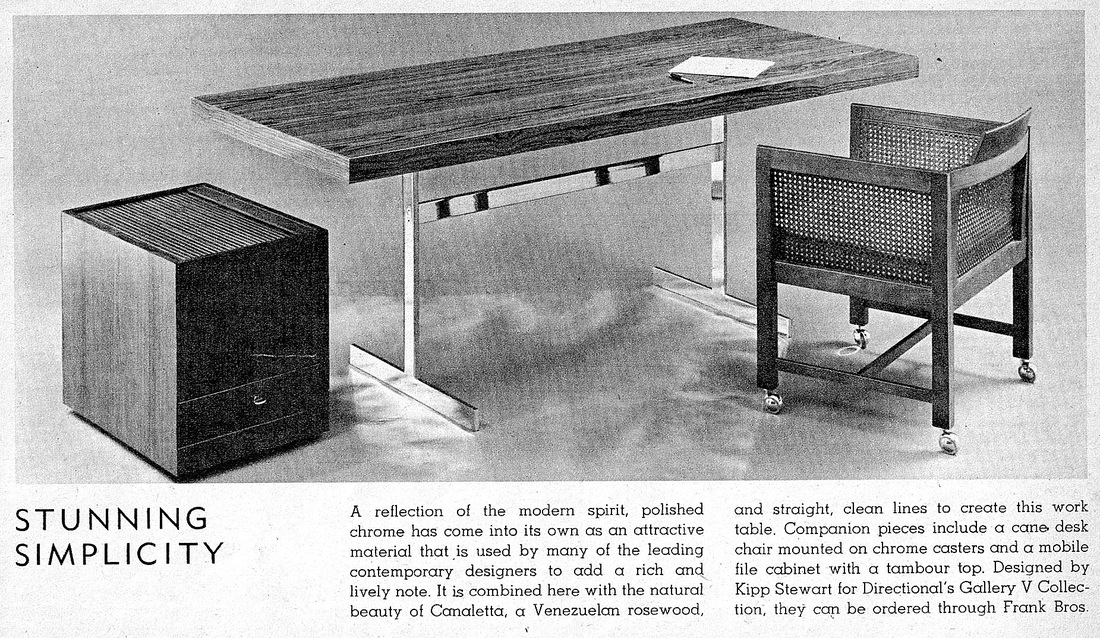
Kipp Stewart for Directional's Gallery V Collection, 1970. Canaletta (a Venezuelan rosewood) and chrome base desk; cane desk chair mounted on chrome casters; mobile file cabinet with tambour top.
"A reflection of the modern spirit, polished chrome has come into its own as an attractive material that is used by many of the leading contemporary designers to add a rich and lively note. It is combined here with the natural beauty of Canaletta, a Venezuelan rosewood, and straight, clean lines to create this work table. Companion pieces include a cane desk chair mounted on chrome casters and a mobile file cabinet with a tambour top. Designed by Kipp Stewart for Directional's Gallery V Collection, they can be ordered through Frank Bros."
MacMillin Construction Company, Scottsdale, Arizona, 1950s Lookbook
Meredew Furniture Catalog and Supplements 1954
NATHAN ( B & I Nathan ) Furniture Care and Maintenance of Your Furniture and The Exclusive Owners Club Booklets from about 1988
RAYMORE Ceramics
Mark Hill Antiques wrote a well-researched and in depth article that remains a work-in-progress. You may read it and contribute here: Mark Hill Publishing. This is a must-read for fans of mid-century modern ceramics.
SCANFORM Tables & Chairs
Scanform was established in 1961. The designs were created in Sweden, Denmark, and Norway and manufactured in Colombia.
SOTKA Furniture, Finland
SOTKA Furniture was launched in Finland in 1959. Sotka Oy offered a wide variety of products in their retail outlets. Sotka was the third largest furniture manufacturer in Finland by 1990. In 1993, Sotka was acquired by company personnel. Operations continued under the name Sotka Finland Oy. In February 1999, Sotka was acquired by Sponsor Capital Oy, management company for capital fund Indoor Group Ltd. (formerly Asko Furniture Ltd.), which was established in April 1999 when Asko's furniture operations were acquired by Sponsor Capital Oy.
Enjoy these pages from Sotka's 1970 catalog:
Enjoy these pages from Sotka's 1970 catalog:
William Lawrence Mid-20th Century Furniture Tag
In 1899 William Lawrence & Co. Ltd., began to build their furniture works, which eventually covered a third of the length of Colwick Vale. This firm was founded by the Nottingham Quaker, William Lawrence, in a garret room on Greyhound Street, Long Row, Nottingham, in 1875. When the factory was completed, it was the second largest furniture manufacturer in Europe.
